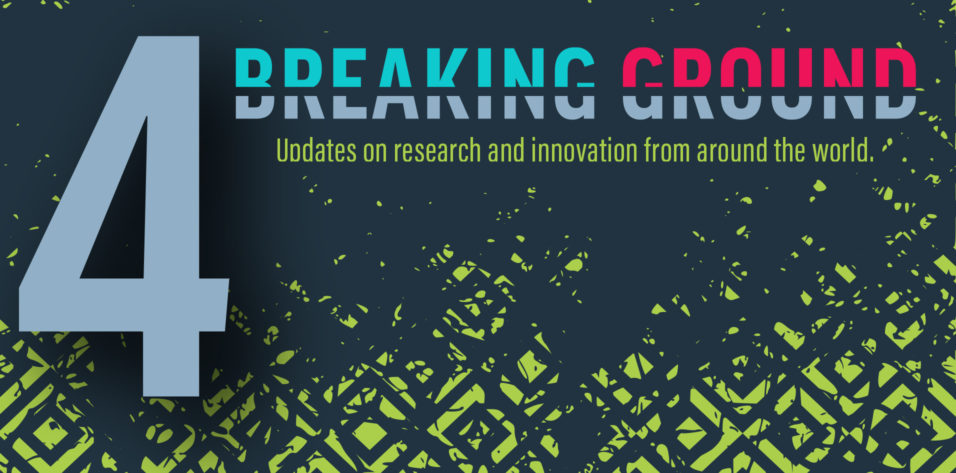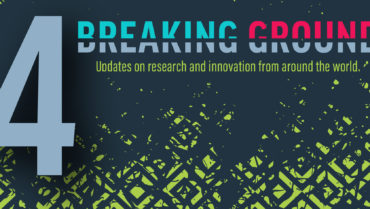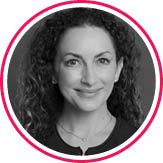
Jesse Berry, MD
1. What has been the primary focus of your recent research efforts?
My lab is focused on the creation of a liquid biopsy for intraocular tumors—specifically retinoblastoma—using the aqueous humor. We have demonstrated that tumor DNA is present in the aqueous humor, that tumor-related mutations can be assayed in that DNA, and that chromosomal alterations are prognostic.
2. Has your research been affected by the COVID-19 pandemic? If so, how?
Sadly, our lab was shut down for 3 months due to COVID-19. Grants have been rescinded due to funding—both those awarded and those under consideration. We used that time well to focus on publishing our results, and we were fortunate to have four great papers accepted! We are finally open again but still in a limited fashion. I think research is innately a creative process, so we are working to continue to connect and innovate even during this time.
3. What is your research dream?
My dream is for the aqueous humor liquid biopsy to actually make an impactful difference in the care of children with retinoblastoma. I imagine a not-too-distant future wherein we sample the aqueous during the initial examination under anesthesia for diagnostic information (RB1 mutations) and to help guide prognosis for the ability to save the eye with therapy (using chromosomal alterations, specifically gain of 6p). Finally, we’d sample the aqueous throughout treatment to monitor the tumor fraction (the percentage of tumor DNA) over time, both as a marker of disease response and to predict recurrences before they are clinically evident to help practitioners intervene earlier. Truthfully, I have dreams even beyond that, as this liquid biopsy may understand our biology of the disease, but this would be a stellar success for this research.
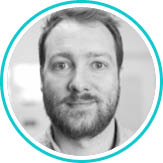
Pete Williams, PhD
1. What has been the primary focus of your recent research efforts?
The overarching theme of my lab is to explore how bioenergetic insufficiency drives neurodegeneration and to identify novel neuroprotective therapies based on these data.
Our current focus is the neurodegenerative eye disease glaucoma and the role of mitochondrial dysfunction in retinal ganglion cell neurodegeneration. We are designing new therapies around the metabolism of nicotinamide adenine dinucleotide (NAD), an important metabolite and REDOX cofactor, in glaucoma, with an aim to go from bench to bedside from our preclinical animal studies. As part of a multinational collaborative clinical trial, we have recently demonstrated that nicotinamide (a precursor to NAD) can improve visual function in existing glaucoma patients, and we are now expanding our preclinical studies based on this as well as initiating additional clinical trials.
2. Has your research been affected by the COVID-19 pandemic? If so, how?
Being in Sweden, the attitude has been a bit different than elsewhere in the world. Thankfully Swedes themselves are very sensible, and hygiene and protection have been high on people’s list.
At the hospital, we have continued our research but in a more limited capacity. Orders and animals take long to arrive, and we have to plan a lot more carefully. Many people have transitioned to working from home when they can, so the offices and labs can be a little bit empty and lonely. A few people on our research team (myself included) have had COVID-19 and so have, of course, isolated for a number of weeks to limit any additional spread of infection. This takes its toll on the research and what we can achieve, but I am very thankful that I have a great team that keeps everything moving as best as we can.
3. What is your research dream?
Right now, my research dream is to develop and take to the clinic an oral, neuroprotective treatment for glaucoma. The work we have done with nicotinamide exemplifies what we want to achieve, and I think we can improve on this. We have now started novel pharmacology work designing new small molecules that intersect these pathways, so I am truly hopeful for the future!
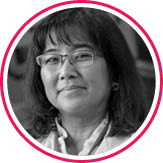
Sayoko E. Moroi, MD, PhD
1. What has been the PRIMARY FOCUS of your recent research efforts?
As a baby boomer, I reflect fondly on my experiences as a clinician scientist. I am very grateful for all of the opportunities provided at Duke University Eye Center during my residency, at the University of Michigan (UM) during my fellowship and 25 years of faculty service, and now at The Ohio State University (OSU), where I began as Chair in January 2020. I mention my training and work sites because the facilities, environment, and local culture all provided opportunities for research.
As a young clinician scientist, my research ideas initially started by my voracious reading of the peer-reviewed literature—including reading in between the lines to sleuth the gaps in our knowledge. I also sought feedback from mentors, some of whom would challenge my interpretation of the data/results and some of whom would caution me to focus my research efforts in trying to balance family life and motherhood. As I developed more experience in the clinic with a primary focus on glaucoma and complex cataracts, I became enamored by patients’ bravery in dealing with their disease and their inquiries. The most daunting question posed by a patient with glaucoma is, “Doc, will I go blind?” These questions fuel my passion for science.
Currently, I have three research areas. The first area embodies precision medicine. My goal is to contribute data that will help determine the “right” glaucoma treatment algorithm for a given patient based on the disease stage, the type of glaucoma, and the degree of IOP fluctuation. I work with several outstanding colleagues in this pursuit, including Arthur Sit, MD, at Mayo Clinic, and Vikas Gulati, MD, and Carol Toris, PhD, at the University of Nebraska Medical Center. Our multicenter clinical trial, funded by the National Eye Institute, is establishing a database of aqueous humor dynamic measurements under baseline condition, under 1 week of treatment with timolol 0.5% twice daily, and under 1 week of treatment with latanoprost 0.005% every night at bedtime. These data will allow us to determine the physiological basis of glaucoma drug response from non-responders to super responders. Our team has biobanked samples for future analysis of candidate genes (or single nucleotide polymorphisms [SNPs]) as potential markers for IOP fluctuation and IOP drug response.
My second area of research involves ocular biomechanics and aqueous humor outflow. I work with several outstanding engineering colleagues on this effort, including Alan Argento, PhD; Guan (Gary) Xu, PhD; and Wonsuk Kim, PhD, who are all at UM. Our project, funded by the National Science Foundation, focuses on determining the effect of IOP on the interplay of perilimbal scleral tissue biomechanics and aqueous vein biomechanics. The clinical relevance of this project is to understand the effect of scleral properties on the aqueous veins, which has direct relevance to the newer glaucoma surgeries that target Schlemm canal and the distal aqueous veins. The potential impact of our data/results is to work toward structural and biomechanical biomarkers that will guide us on the appropriate surgical intervention to target or bypass Schlemm canal.
My third area of research centers on understanding the contribution of vision impairment to balance and falls. I work with outstanding UM colleagues David Musch, PhD, MPH; Carrie Karvonen-Gutierrez, PhD, MPH; Brenda Gillespie, PhD; Michelle Hood; and Sarah Wood, OD. Our work, funded by the National Eye Institute, is analyzing newly collected prospective eye exam data in a cohort of mid-aged women, who have longitudinal data on physical functioning and surveys on falls. The results will improve our understanding of vision parameters as a marker for poor physical functioning and risk for balance problems and falls. The potential impact of the findings is the development of interventions to mitigate balance problems and falls, which is a growing and serious health problem for the aging population.
2. Has your research been affected by the COVID-19 pandemic? If so, how?
Yes. While my research projects have been affected by my move from UM to OSU, the COVID-19 pandemic shut down all research except for the therapeutic trials. We, like all others, have taken measures to implement enhanced safety measures that include personal protective equipment for staff and patients and additional cleaning methods for the exam rooms, clinical equipment, and test equipment. My team has slowly resumed clinical research. A silver lining of the pandemic is that our department has implemented some new clinical models for glaucoma care, including: (1) a drive-through IOP clinic; (2) a hybrid patient visit model, consisting of an in-person visit for visual field testing, imaging, and IOP measurement followed by a telehealth visit to discuss the results and next steps; and (3) real-world IOP measurements using the Icare Home tonometer (Icare).
3. What is your research dream?
My end-of-the-rainbow wish is to see my research contribute toward preventing glaucoma-related blindness. My dreams include: (1) developing a hybrid clinical and polygenic risk calculator to guide clinicians on a treatment algorithm for glaucoma management, (2) developing a physical map of a patient’s aqueous veins that will guide glaucoma surgical intervention, and (3) developing a holistic approach centered on vision health to promote healthy aging and fall prevention.

